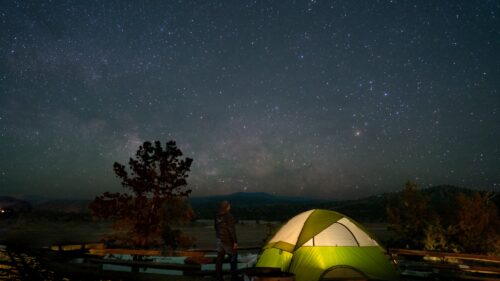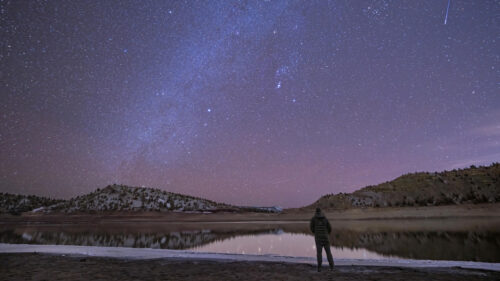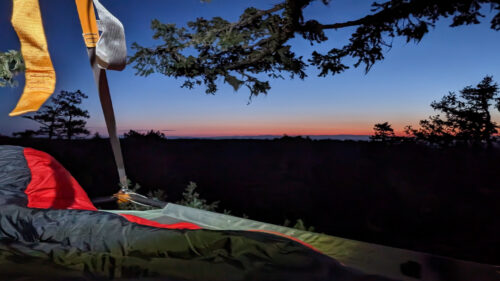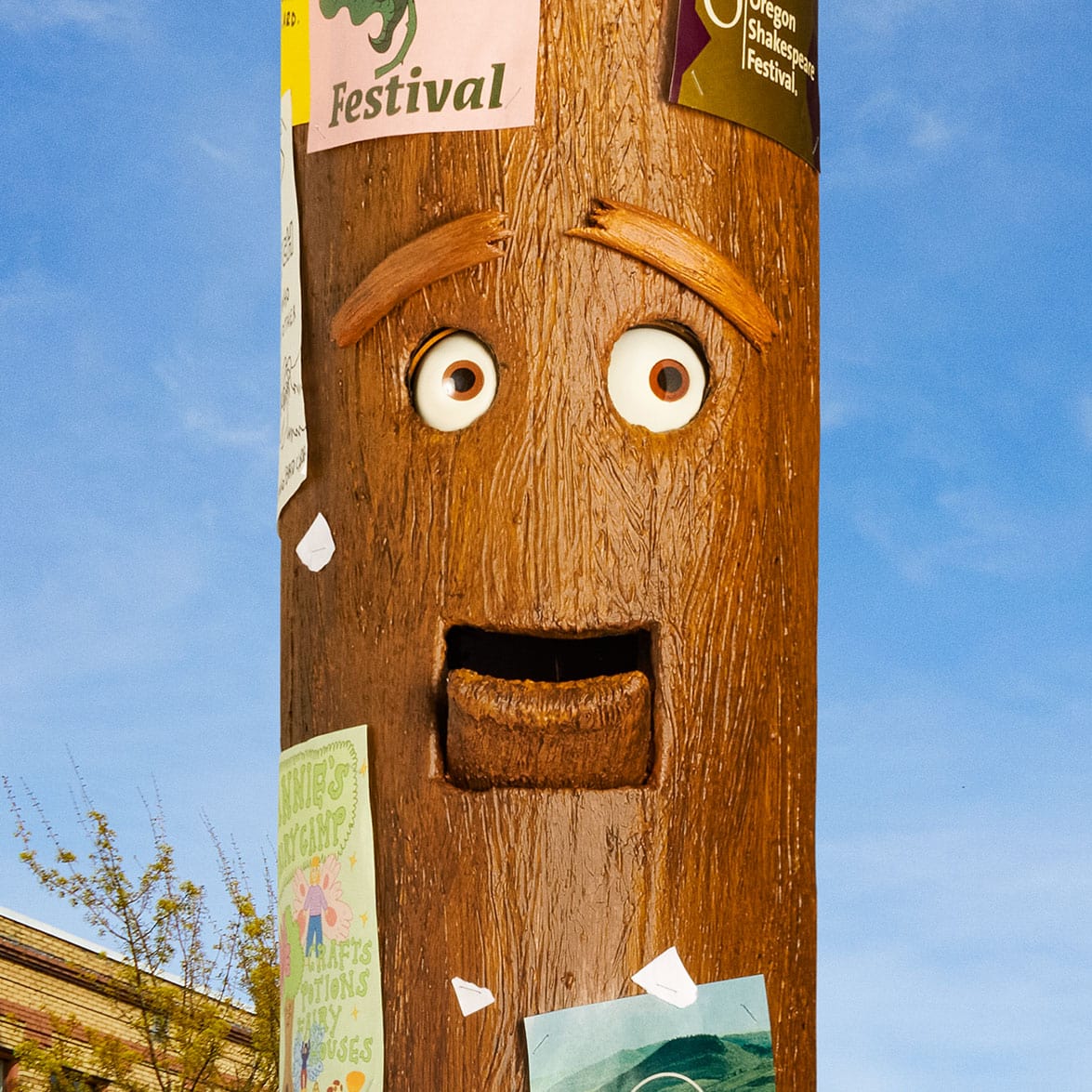Did you know nearly 80% of people in North America can’t see our own galaxy at night because of light pollution blotting out the stars? Not so at Prineville Reservoir State Park, Oregon’s first International Dark Sky Park, about 15 miles south of Prineville, where the Milky Way and a host of cosmic wonders twinkle at full, mind-boggling force. Here are some of the ways in which park ranger George Faria helps visitors make sense of this extraordinary night sky in Central Oregon.
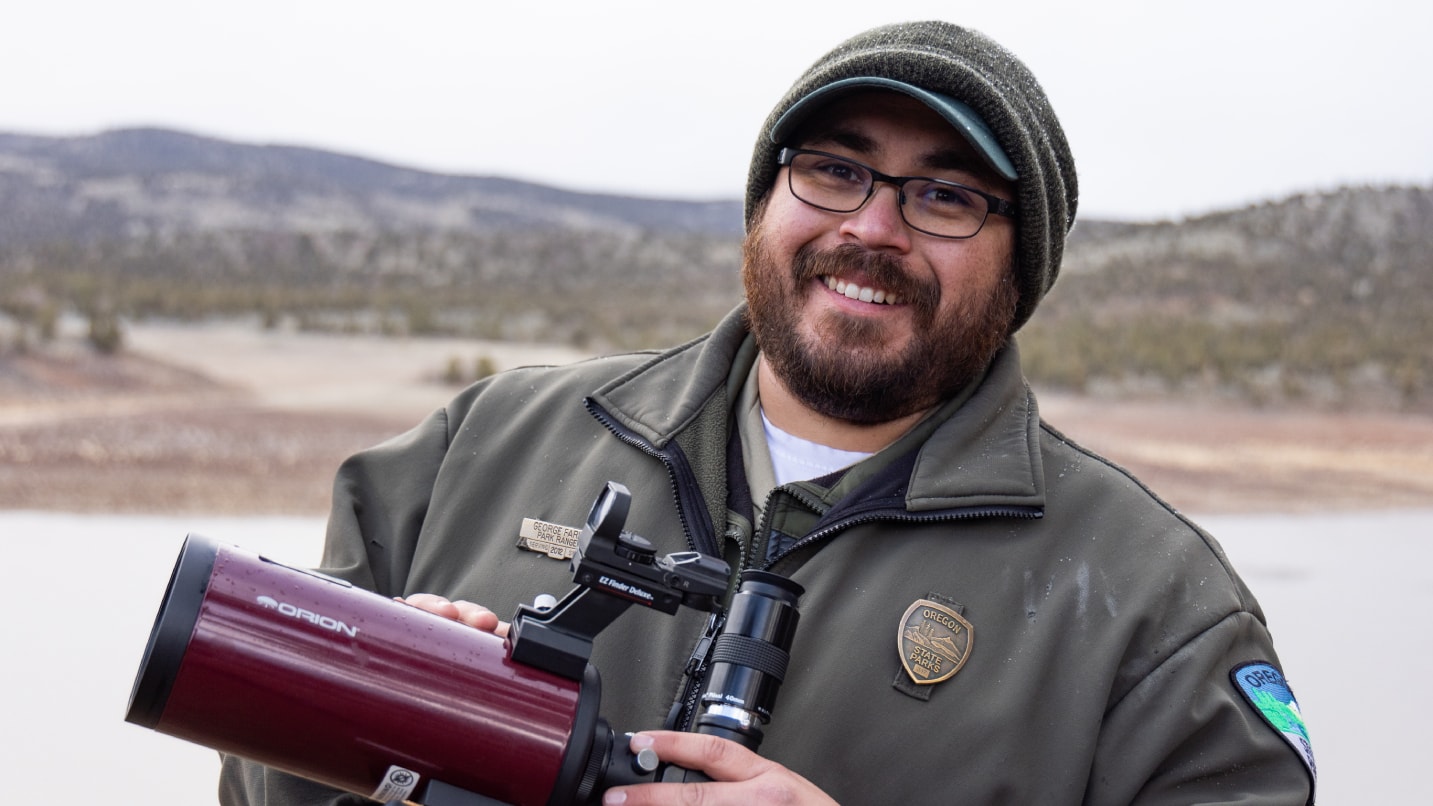
Why is the park one of Oregon’s best places for stargazing?
The park’s geographical location makes it unique since it sits in a bowl with the Ochoco Mountains around it. That matters because lights from nearby cities like Bend, Redmond and Prineville can’t beam directly at us, giving us kind of an illusion that the sky is darker. We also do a lot at the park to cut down on light pollution.
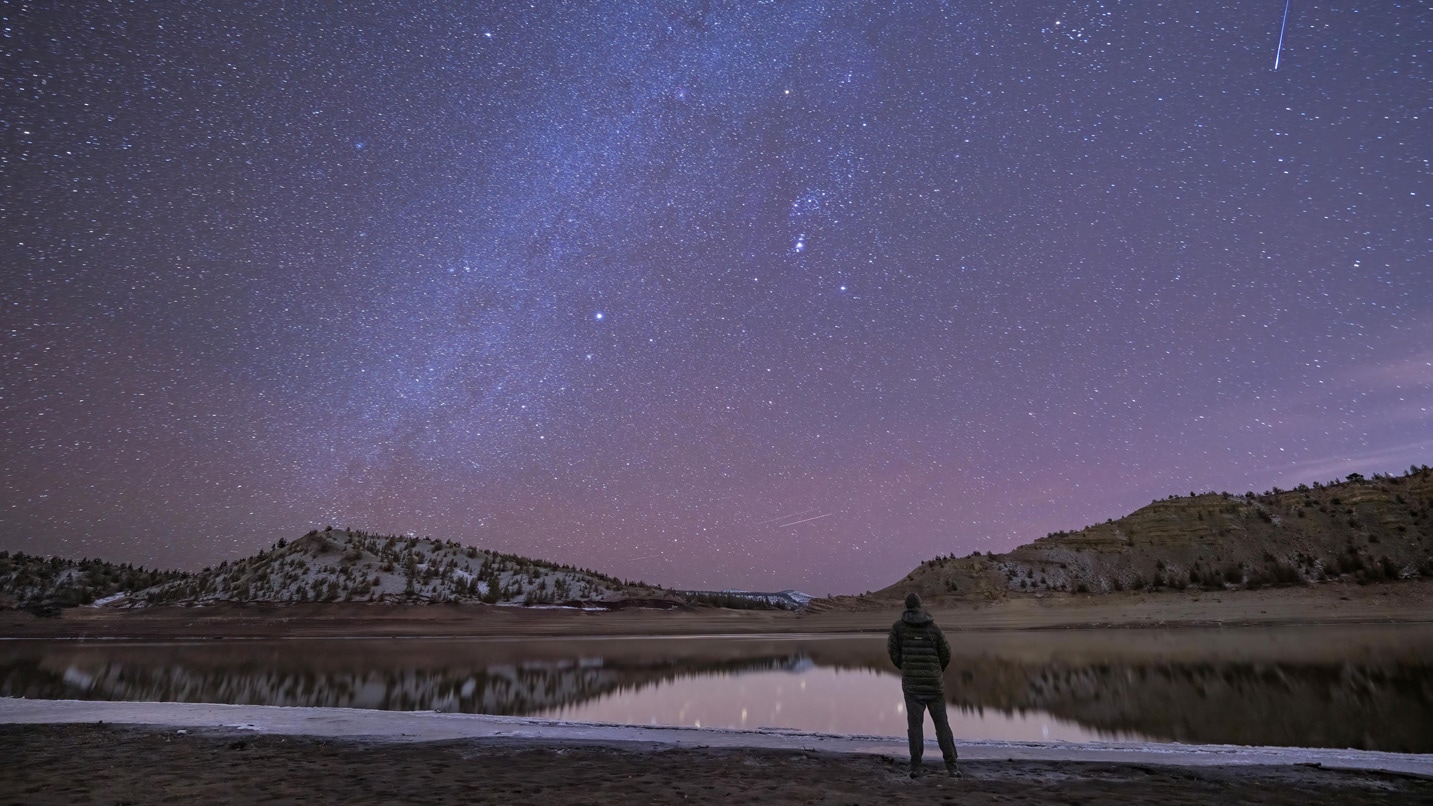
What do you get out of gazing up at the stars?
There are so many things out there that we just don’t see on a daily basis, even from a small town like Madras, where I live. You can forget just how many stars there are and how vast the night sky can be. When I come out to the park, there can be so many stars that they can almost hide the constellations.
If you come toward the end of summer, the Milky Way will be directly overhead. It has an unimaginable amount of stars. It’s mind-blowing. And then you show people Saturn through a telescope and it always looks fake. It’s just too perfect with all the rings. Nebulas, those globular clusters, are breathtaking too. It’s as if someone took a handful of glitter and threw it at a black piece of paper splattered with glue, except the glitter is actually millions of stars being born.
Can you offer some tips for first-time stargazers?
It really helps if you can find a place where people can help you view the stars. It can be quite daunting. At Prineville we do programs every Friday, Saturday and Sunday — with Saturday and Sunday being our telescope-viewing days — usually from the end of May to early September. Then you’ll be prepared to understand the basics. Try to visit during a new moon cycle and be ready to stay up super late. The show only gets better as the night goes on. It doesn’t hurt to have a pair of binoculars; you don’t necessarily need a telescope.
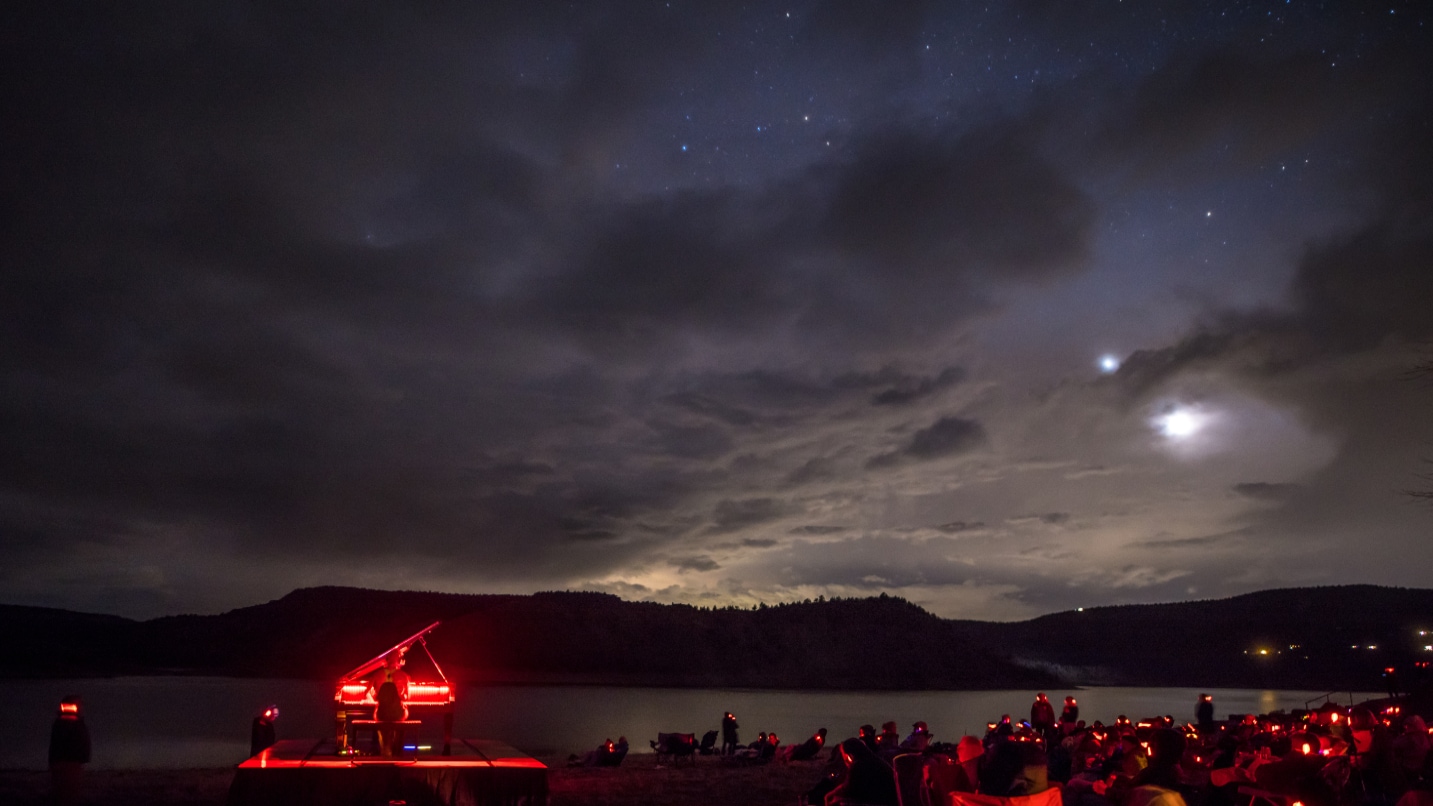
Are there other places in Oregon that are great for stargazing?
Absolutely. We have Cottonwood Canyon State Park out on the John Day River, which is a phenomenal star-viewing area and soon to be the second state park to get an International Dark Sky Park certificate. But you don’t have to go far. Just 34 miles west of Portland, L. L. Stub Stewart State Park is just far enough up in the Coast Range peaks that it’s a great place to view the stars. Southern Oregon and the areas near Lakeview have some of the darkest skies in the state, too.
Realistically, all you need to do is find yourself a nice dark place. Take a drive away from the city lights, not even that far. Step out of the car, turn the vehicle off and look up. You’ll be impressed.
What should visitors do while waiting for the sun to set?
The fishing is ridiculously good at the park. Smallmouth bass, largemouth bass, crappie, rainbow trout, brown trout — there is a very good chance that if you cast out, you’ll catch something. We also do some guided hiking tours that are free to the public, and kayak tours that run on Friday and Saturday through the end of summer. Junior ranger programs happen every Saturday, and there are different types of night programs like, say, talks about the moon in the amphitheater. There is plenty to do but not on your phone or other device. There’s no service out here. It’s a great place to disconnect.
